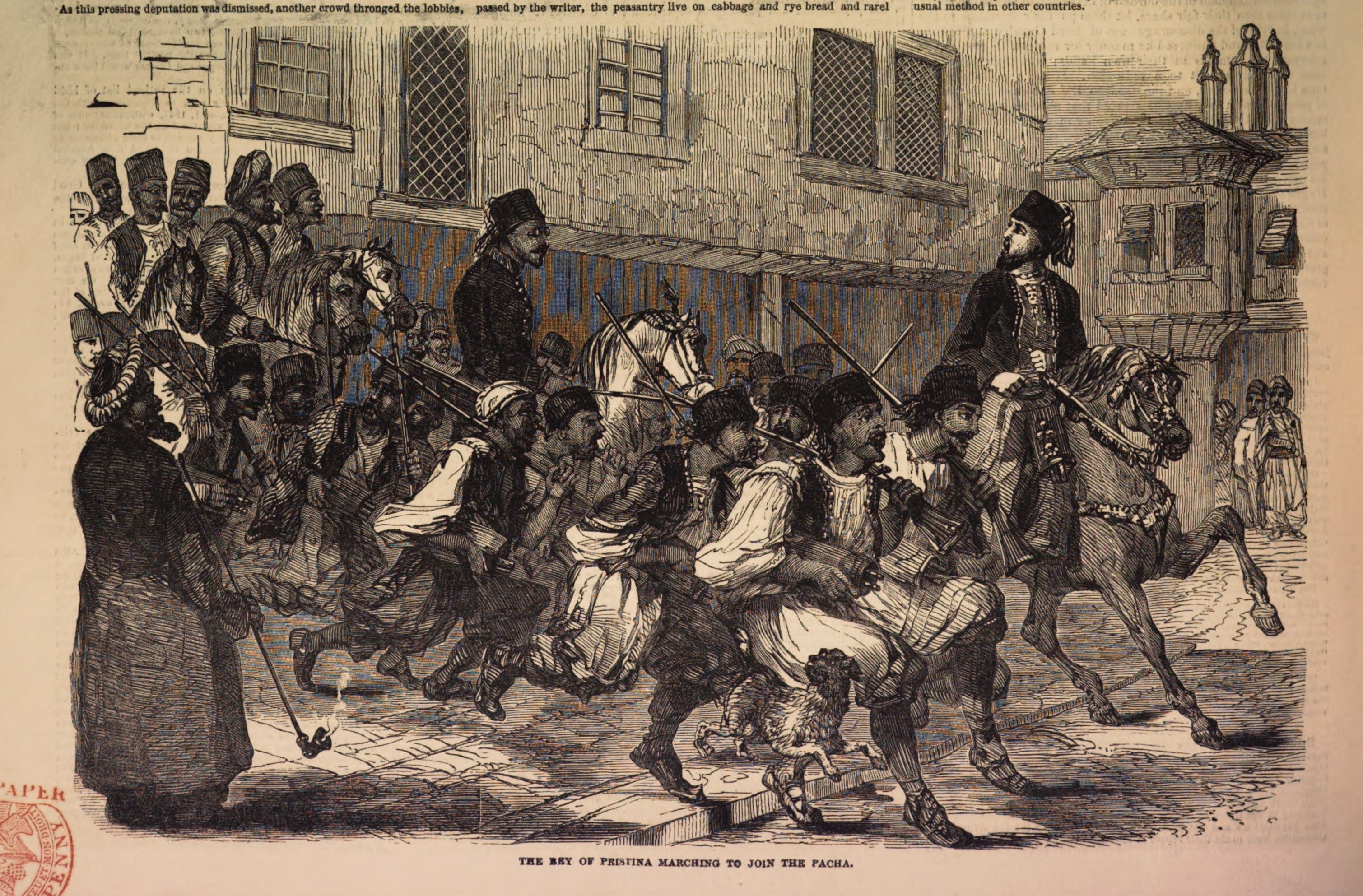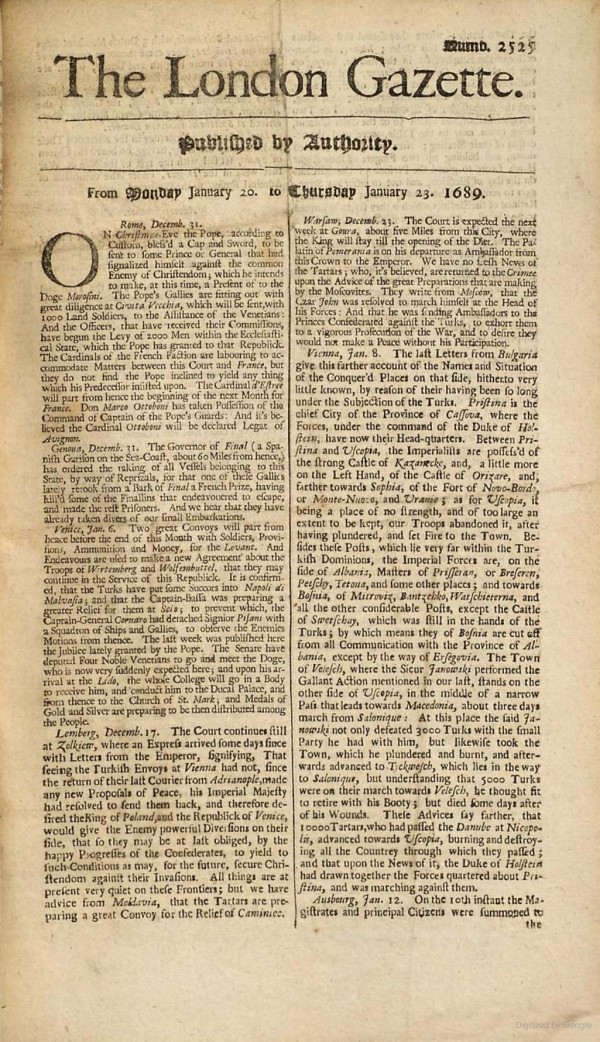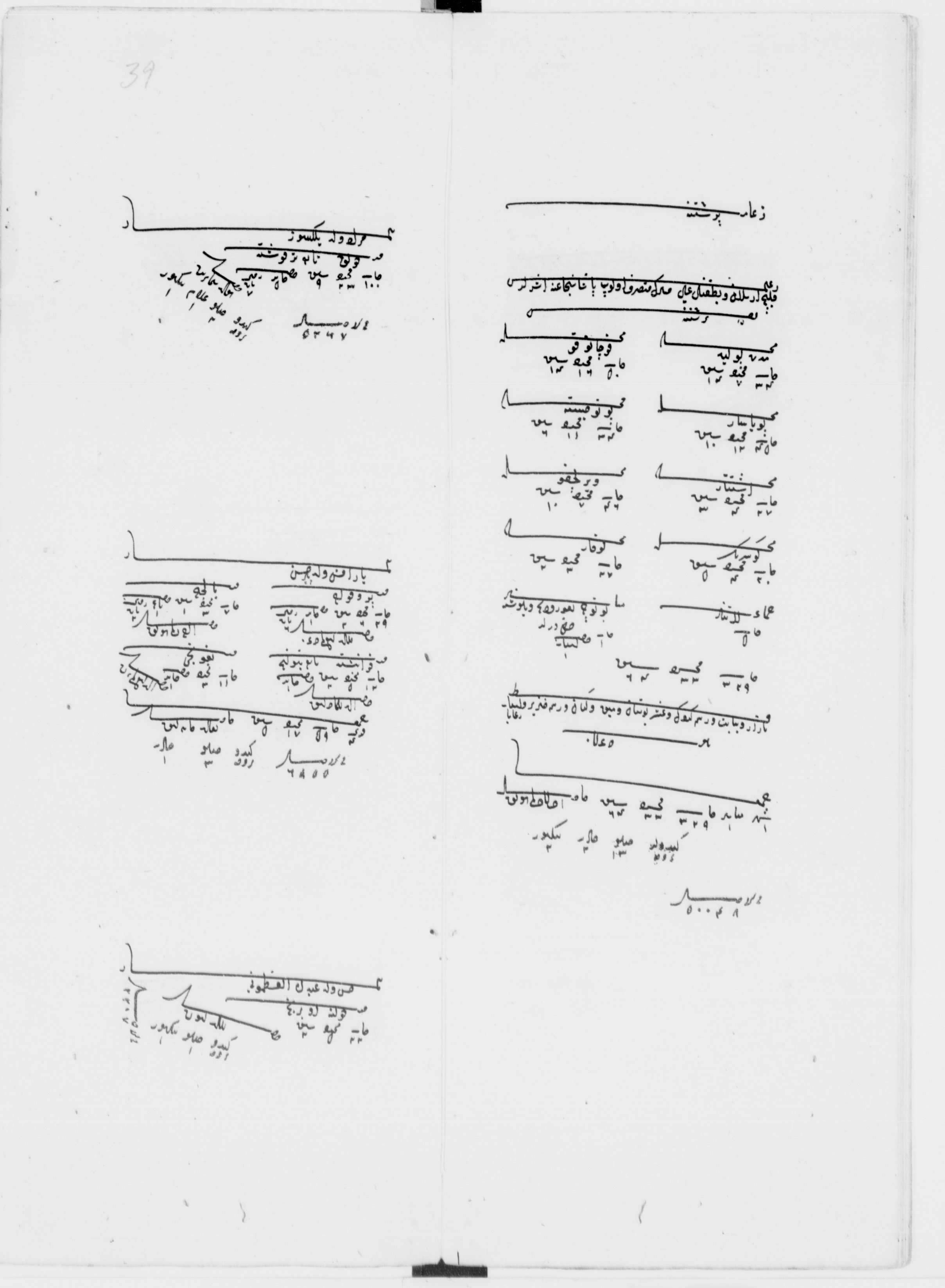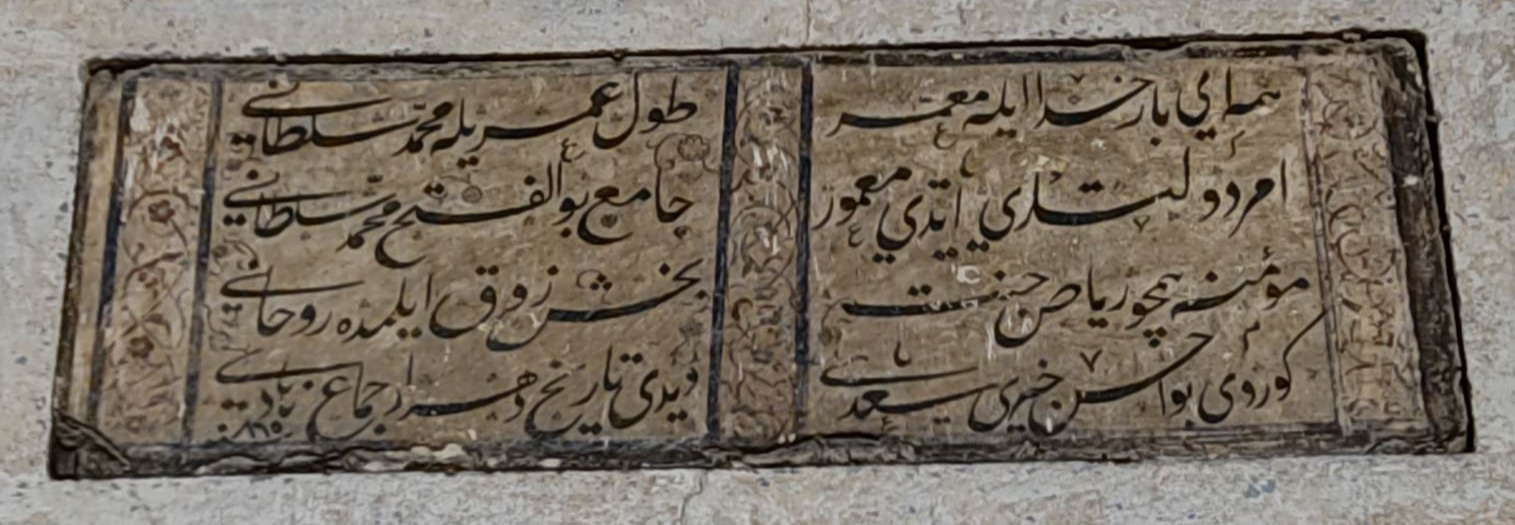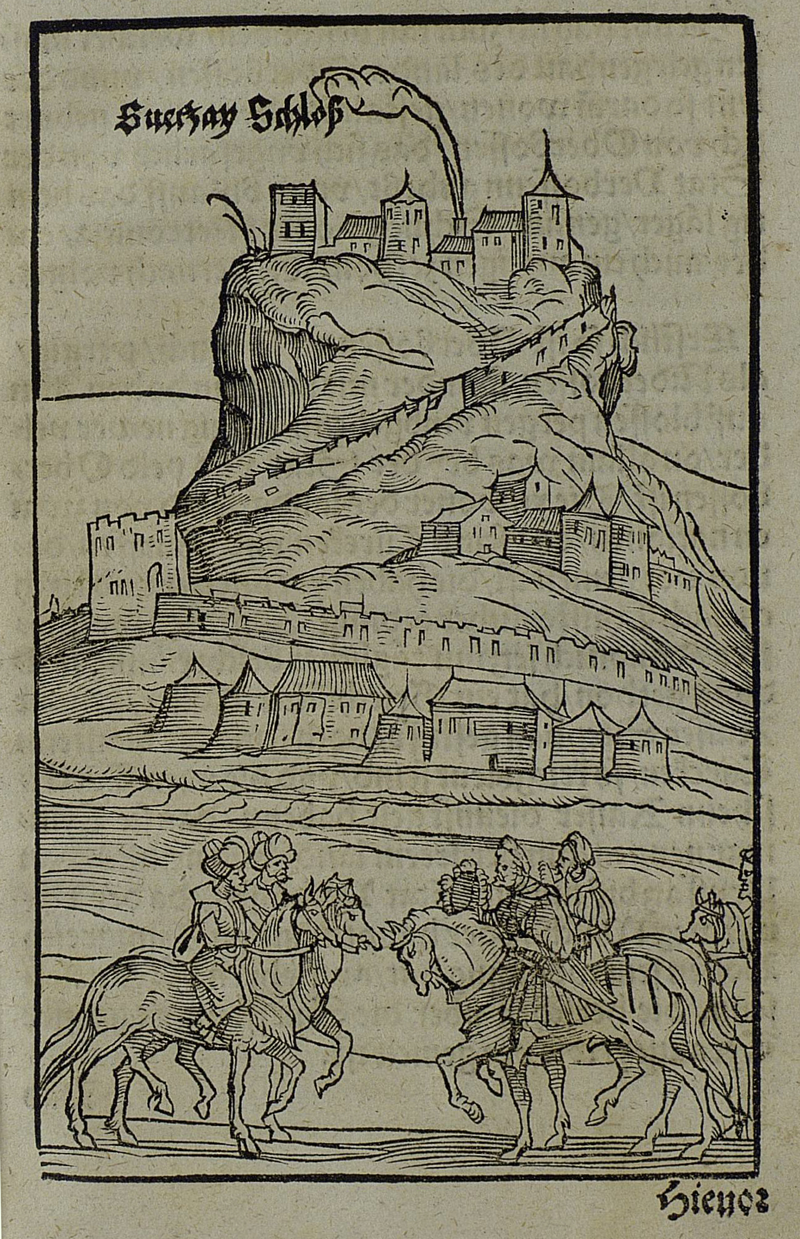Prishtina is rarely documented visually before the 20th century. In fact, the first graphic documentation of the city, at least in some form, appears very late in the middle of the 19th century.
1. The earliest view of Pristina comes from 1849, when an English magazine featured a visual fragment of the city. 1 In fact, no clearer impression of the appearance of the city can be obtained from it, except for a few buildings and some chimneys. Moreover, the engraving, which is by an anonymous hand, was probably based more on the correspondent's descriptions than on what the artist's own eyes had seen. The most accurate there should be the portrayal of the two main figures, the Bey of Pristina, who at this time was a certain Hasan Saxhi Ramiz Bey (fl. 1848–1854),2 and of a pasha named Bau Pasha, which should be Abdurrahman Pasha (1813–1872). It should be noted that Hasan wears glasses, and has a "modern" appearance, as the author of the text notes. 3 The soldiers who appear in the engraving wear frocks, which at first glance seems strange, but which is somewhat justified by the fact that at this time the southern armies were often involved in campaigns in the north as well.

2. More or less of the same nature is another engraving from Pristina, this time from 1872, which shows the dancing of a Roma dancer in the living room of a large house in the city. 4 We do not have any concrete evidence either here about the author, or about the circumstances in which it was made. Particularly noticeable is the 'exotic oriental' style with which a bearded pasha is presented, the exotic dancer among the women watching. The engraving appears to have been made from illustrations made locally, as a notice of the volume states. 5 In the event that the image really represents a character of the time from the city, at that time, it would be possible that we are again dealing with the figure of Abdurrahman Pasha, already advanced in age, who briefly returned as the leader of the city in 1869. These are the only two engravings that present any motif from the interior of the city.

3. There is also an undated painting that must be at least from the 18th century at the entrance gate of the King's Mosque in Pristina. It shows the view of the mosque itself with a relatively wide garden around it, perhaps the earlier view of the surroundings of this mosque. No other buildings can be seen in this drawing. In general, this fragment is preserved in good condition, and it would be very interesting if in the future the specialists could inform us better about the possible date of its realization. 6
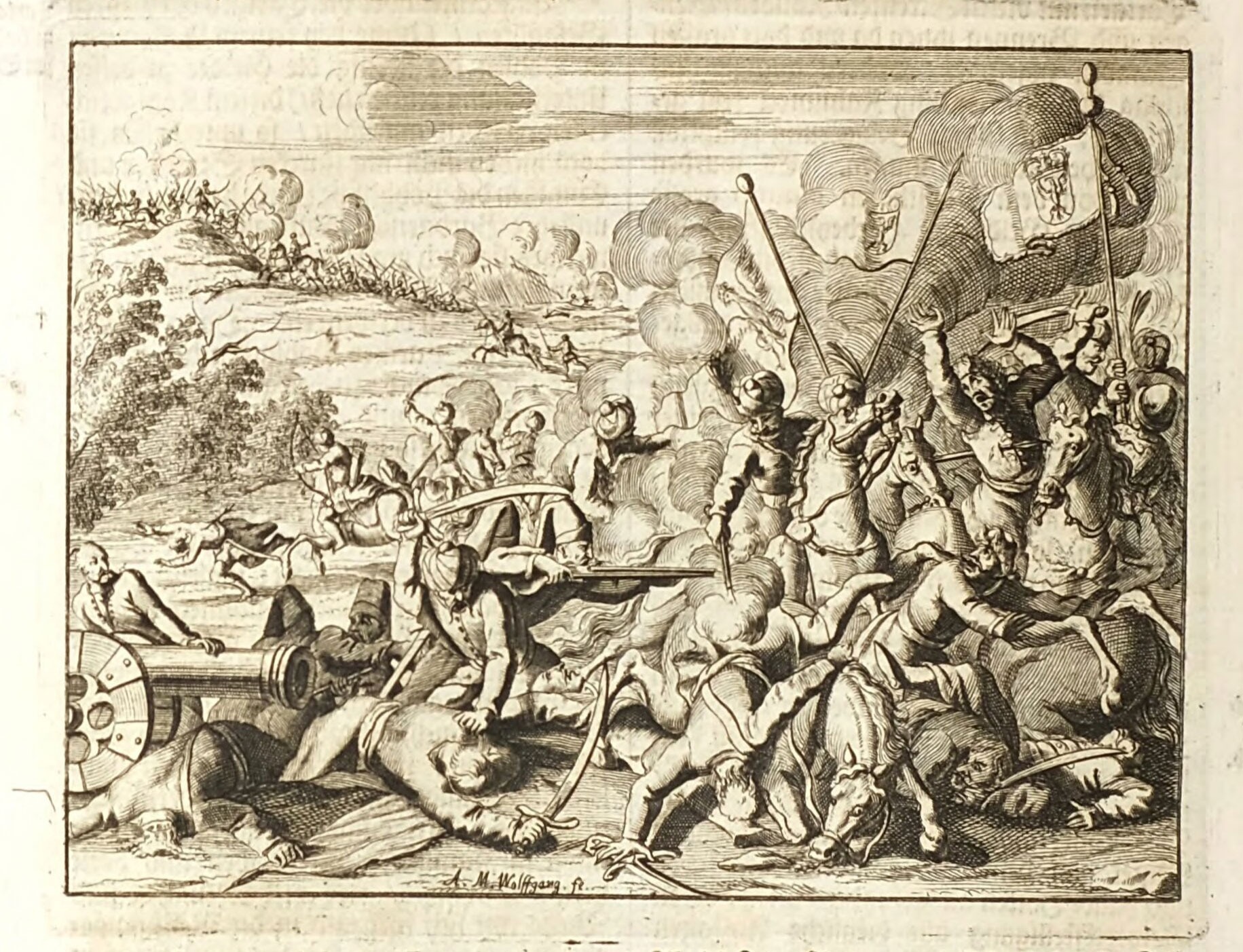
4. An older engraving from 1701 shows the Habsburg campaign in Kosovo in 1689 and 1690, with a battle near the city of Pristina, but where no details of the urban part are visible. 7 Its author is Andreas Matthäus Wolfgang (1660–1736) of Augsburg, who must have based his engraving on some preliminary drawing, since from 1683 to 1691 he himself was held captive in Algiers, and was nowhere near Pristina. Meanwhile, on the maps of the time, Prishtina was shown more often. The oldest representation is in Venice in 1450, by Fra Mauro. 8 There the city is close to Novoberda. But other than as one point among many points, this map does not bring any further details. Such are the many other maps that were made in the meantime, and which in most cases are characterized by numerous inaccuracies, placing the city sometimes closer to the sea, sometimes closer to Sofia, but always very close to Janjeva and Novobërda.

5. Of the photographs, again the visual evidence is very late, the earliest is from 1890, which was published in a Serbian printed book. There is a wide landscape of the city, where the photographer must have been positioned probably on the hill of the Arbëria neighborhood today (which used to be known as Dragodani). 9

6. Another photograph, from inside the city, better known than the others, dates from 1895 and shows, among other things, the old clock tower in front of the then government mansion, today the Museum of Kosovo. 10

7.Some photographs that we have recently discovered in the archives of Istanbul show the moment of the reconstruction of this government mansion in 1899, probably at the same time when the clock tower was moved to the location where it is today. 11
Y. Rugova
-
1
It is about volume 4 of the magazine The Illustrated London News, October 27, 1849, p. 280, from an unknown correspondent from the scene. The illustration is accompanied by a text about the political and military situation in Albania and Kosovo. The caption under the photo reads, "The Bey of Pristina marching to join the Pacha." While the explanation is also brought: "In this wood engraving, the Bey of Pristina is shown marching out [of the city] together with the Pasha and his irregular troops."
-
2
In some places, he also appears under the name Mahmut Pashazade Hasan Bey, and we find him on these dates in the Ottoman documents of the Archives of Pristina. On October 27, 1846, Melek Bey was dismissed from the position of kajmakam (leader) of Pristina, and Hasan Bey was appointed in his place. Khs. Archive of Pristina, G.MVL 82/1628. Meanwhile, his last date is after his death in February 1855. Khs. Archive of Prishtina, A.MKT.MHM. 65/25, 4.II.1855.
-
3
According to the unnamed correspondent: "The Bey, an officer of the modern school, with his flat turban, unadorned coat, and spectacles on his nose, presents an extraordinary contrast to the wild attendants who rush close to him in two lines. , and open the wide path ahead like a herd of goats.”
-
4
It is about volume 4 of Illustrated Travels magazine, p. 280, by Henry W. Bates (1825–1892).
-
5
"Each volume is illustrated with approximately 200 engravings, made from original photographs or drawings," see The Athenaeum, No. 2466, January 30, 1875, p. 171. Also: see Henry Leslie's Musical Annual, 1874, advertisement at end, p. 3: "...illustrated with 148 engravings, by the best artists of the time, based on drawings made in the country."
-
6
Information about the architecture and decorations in this mosque see. Orges Drançolli (2000). Fatih Mosque in Pristina. In XVIII. Türk Tarih Kongresi, 1-5 Ekim 2018, Ankara, 895–910.
-
7
See Paul Rycaut (1700). Der Neu-eroffneten Ottomannischen Pforten Fortsetzung, Augsburg: Kroniger, Göbel, Wagner, p. 550.
-
8
The map, which has dimensions of 2.4 x 2.4 meters, is located in the Biblioteca Nazionale Marciana in Venice. A high quality digital scan of it can be viewed here.
-
9
See Milojko V. Veselinović (1895). Pogled kroz Kosovo, Trgovina J. M. Pavlovića i kompnitati, appendix I. We thank Valon Shkodra for making us aware of the existence of this photograph.
-
10
See Salnamen (Yearbook) of 1896, printed in Skopje.
-
11
We thank A. Islam for finding this last photo from the archive in Istanbul. It is unknown until now, and shows the moment of the renovation of the Government Mansion in 1898. A renovation plan dated February 17, 1898 is located as a digital copy in the Archive of Pristina.

